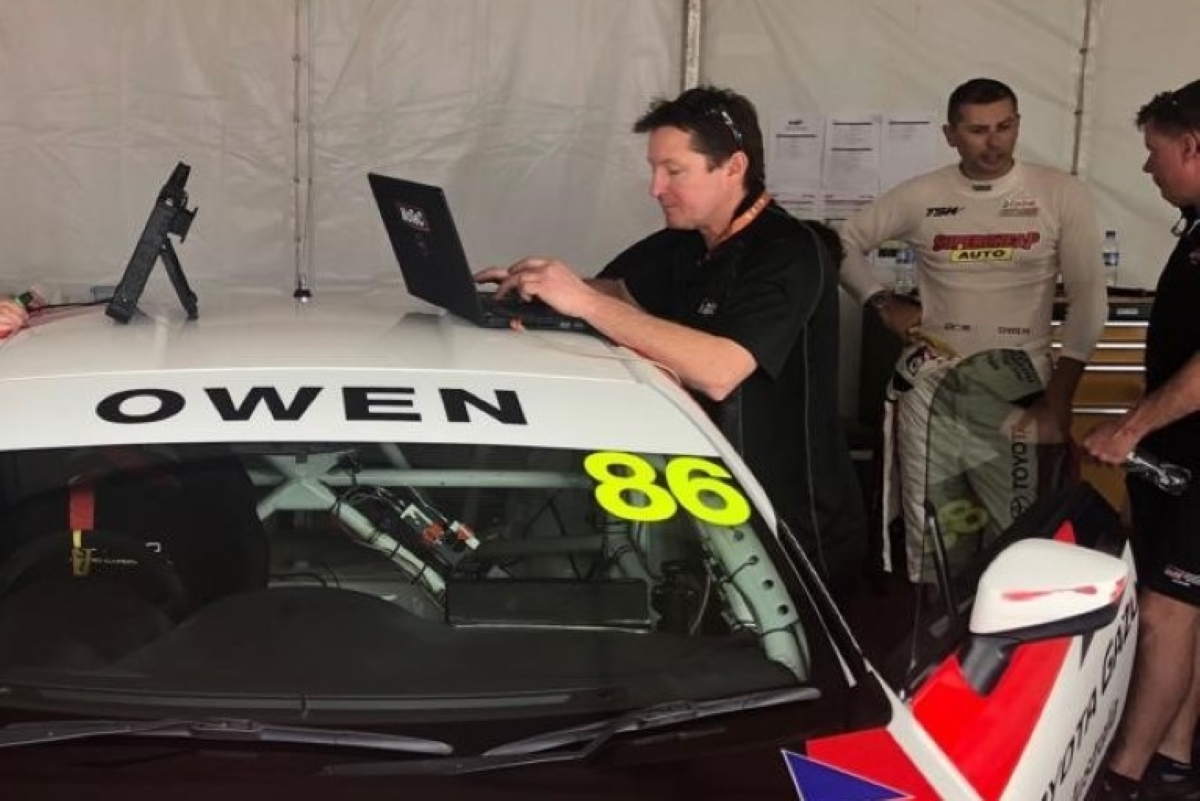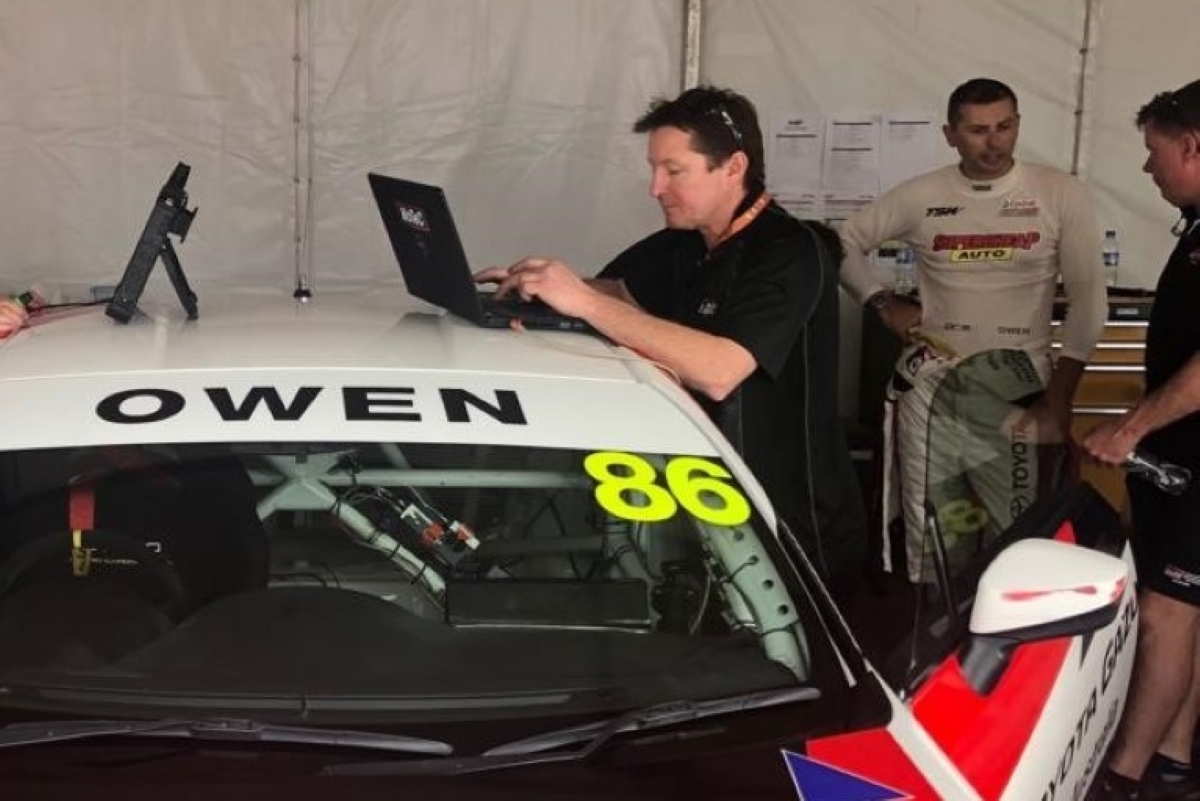

In the latest instalment of the Kincrome Mechanic Series, Speedcafe chats with engine magician Phil Armour.
From racing to Improved Production, Armour turned his knowledge towards engine tuning after fellow competitors witnessed the work he had done to the MoTeC inside his Suzuki Swift.
“I started racing in Supersprints in a Mini when I was 15,” recalled Armour.
“I had a real hunger for motorsports, so while we are doing that, I was helping Tom Watkinson in his Toyota Corolla. Then Tom teamed up with Calvin Gardiner and Peter Hopwood in an MR2 in the Bathurst 12 Hour.
“I brought a MoTeC for my own car and did a bit of tuning on it. Then more people were asking me to do tuning for them.”
The influx of customers started with Dave Loftus and the Brandster Services Motorsport Nissan Skyline GT-R, who’s results encouraged more competitors to be tuned by Armour.
“There were two with Dave and John Boston and I started to tune them, and they were winning,” Armour said.
Besides racing successfully in Improved Production, Loftus competed in the Super Lap at Oran Park, the forerunner to the highly successful World Time Attack.
As work continued to snowball, Armour was set up in his father’s workshop and contracting out. Ultimately, he set up his own workshop in Western Sydney where he exclusive does engine tuning and mapping.
“We brought a hub dyno this year, so we can handle the big Time Attack stuff, Drift and things like that,” he explained.
Armour worked for Mike Quinn of Phoenix Motorsport during the build of its Supercars-spec Holden VS Commodore from a shell Garry Rogers started for the Konica series. The car competed in the Konica Series with Ron Searle at the helm as later Aaron McGill joined in an ex-Perkins Commodore.
A spell in South Australia followed where Armour worked alongside Oscar Fiorinotto and Jay Verdnik. Later stints with Luke Youlden, who was running McGill in a Ford Falcon AU, before returning to the Verdniks as he joined New Zealanders Mark Petch and Kayne Scott in the Development Series. Other drivers Phil worked with included Shane Price and Nick Percat.
A change of pace followed as Armour then worked with Garth Walden as the Radical track cars began to build popularity locally.
Returning to the Development Series courtesy of Boston and Bruce Oaklands in an ex-Derek Van Zelm VZ Commodore failed to occur due to the door bars being too high leaving the crew to purchase an ex-Tim Slade VY. Former production car racer Chris Delfsma was next after making the step up to the Kumho Series in an AU.
“That sort of led to opening my own workshop,” reflected Armour. “It got to the point of working every day and every night, every weekend. I looked for a factory and got the one I am in now.”
When he moved in, he was still working on Oakland’s two Supercars, Delfsma’s plus all his many local customers in Improved Production and Production Cars. Armour was also working on Jim Pollicina’s Kumho and Super2 entries, while he joined Jim Hunter when he took his Subaru to Sepang in Malaysia.
“That was when I decided I didn’t want to do the travel anymore. I had too much dyno tuning, and other stuff and I was spending too long away from the workshop.”
He worked on the Neal Bates Motorsport-built, championship winning Toyota Yaris, so when the Toyota 86 series came along there were issues with engine mapping, making them reliable and consistent, leading to Armour getting involved.
“Fixed all that up and they became a permanent fixture,” reflected Armour. “We are doing work on the new GR 86s and got all the Motec kit ready for that.”
Armour continues to work on Supercars mainly Warren Millet’s ex-Holden Racing Team VZ Commodore (which Armour sourced the engine for) and the similar entry for Nandi Kiss, but he has diversified into historics as well as the powerful Sports Sedan category.
What is Armour’s advice for an aspiring person wanting to make a career in motorsport?
“You really need to start working for a team where they can be hands on, like David Wall Racing or Garth Walden Racing and get to do a whole heap of things, not just one aspect,” he said.
“The problem you have with Supercars and things like that, you only get to work on bits and pieces, but not on all of it. You might do sub assembly, or you’ll know the gearboxes or the diffs, not the whole package. You need to learn the electronics and the MoTeC side of it if that is where you need to be.
“I don’t plan on any expansion or changes at all, I am busy enough as it is. I’ve got way too much to do, particularly as a MoTeC dealer.
“Back in the day, when I started tuning, all you had was the ignition timing. It was easy, if there was something new, you only had to learn one element.
“These days, you got to drive the whole car out of the ECU. You’ve got gearbox control, paddle shift control, there’s ABS control and diff control – there are so many systems. It’s out of control, give someone an M150 with paddle shift, and say, way you go . . .
“I spend a lot of my days dealing with people and teaching them how things work. They can just send me the data out of the ECU, out of the MoTeC, and I can read it, and go okay. You can see everything.
“The number of channels you can log in an ECU, up to 1000 times a second! You can see absolutely everything going on from when it pulled the pedal to when it’s changed gear. Work out whether you’ve had a wheel locking, causing an issue and that can be seen in a graph.”
Your whole life’s passion seems to be in motorsport. Are you happy with what you’ve done and where it’s got to?
“Absolutely, getting to do all this sort of kind of the work and then the dyno tuning. Yes. That’s where my passion is.”





















Discussion about this post